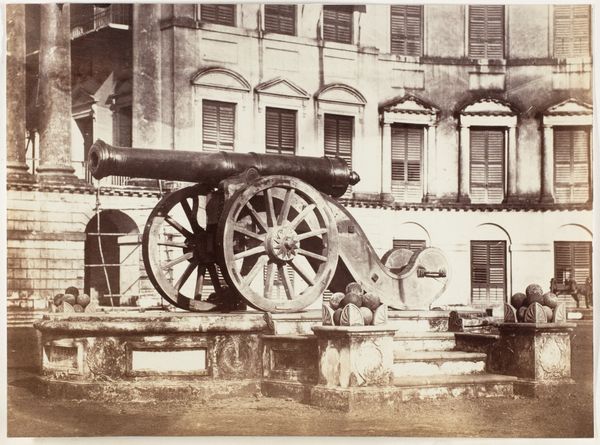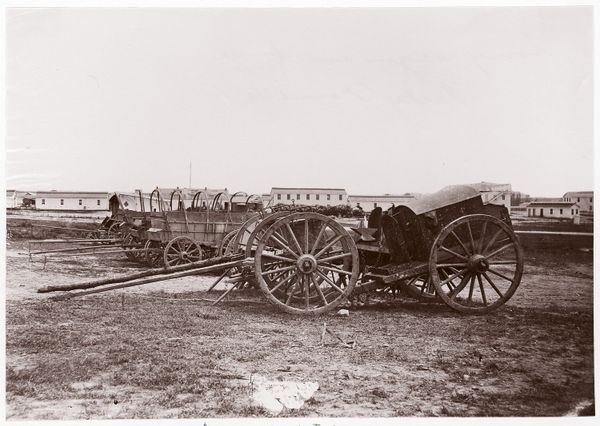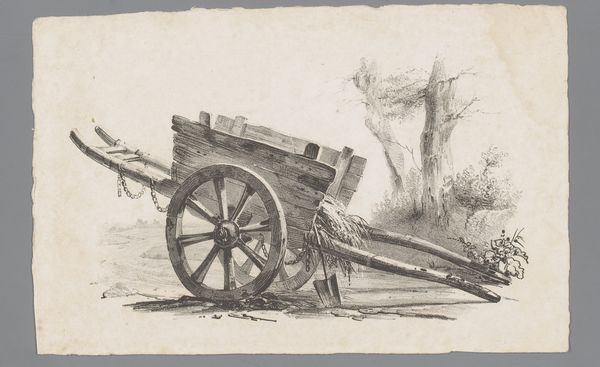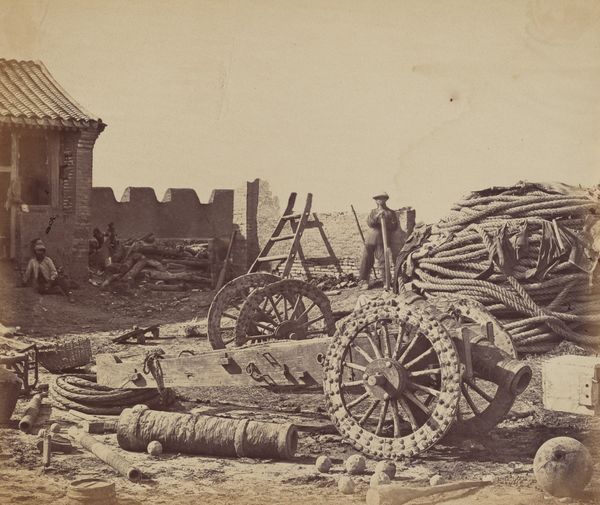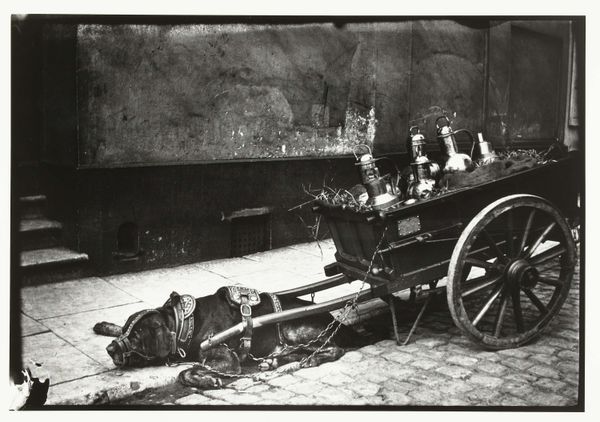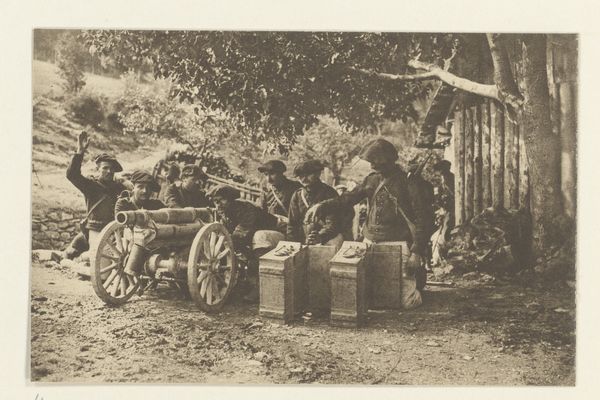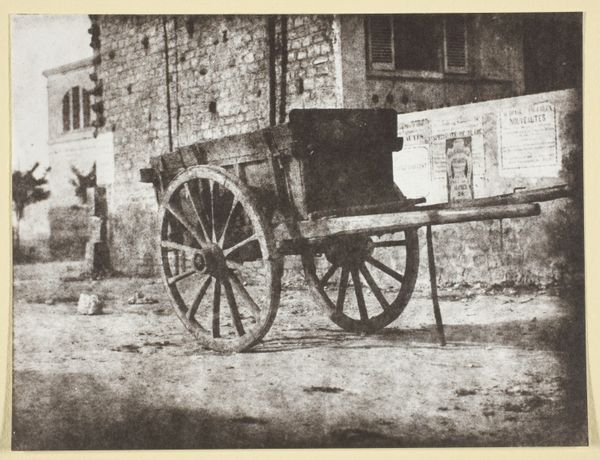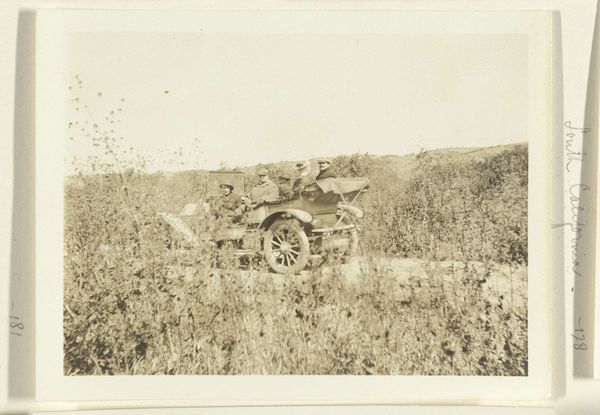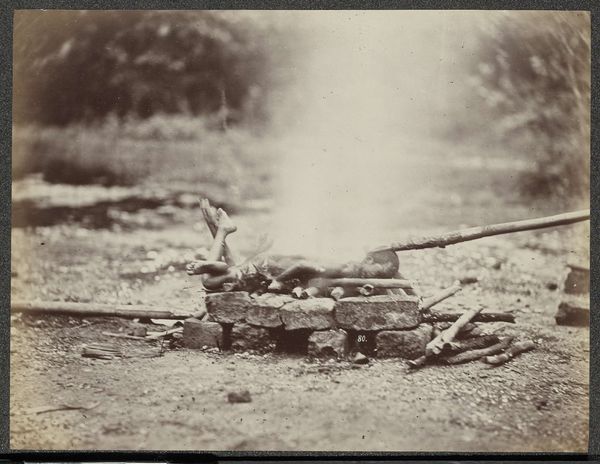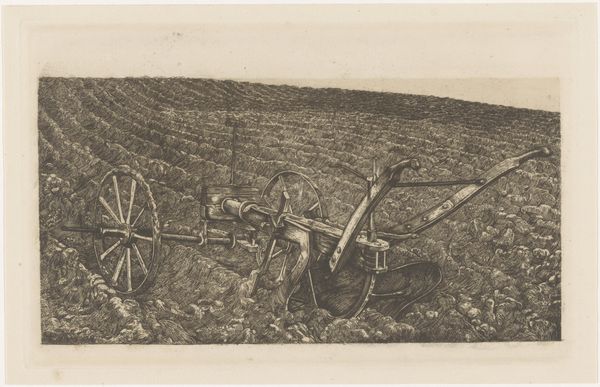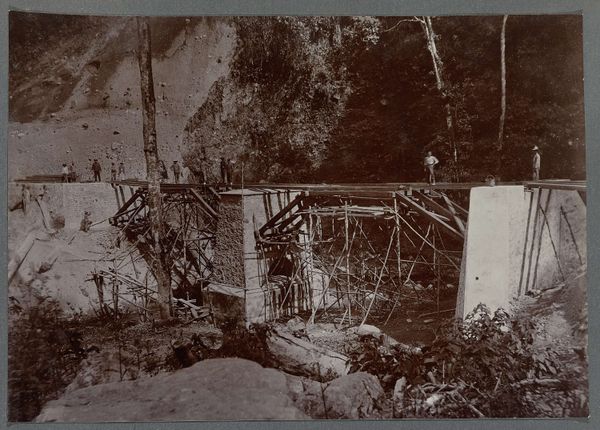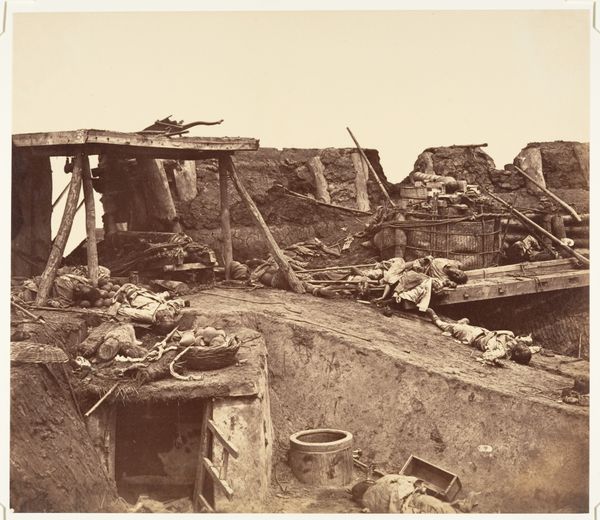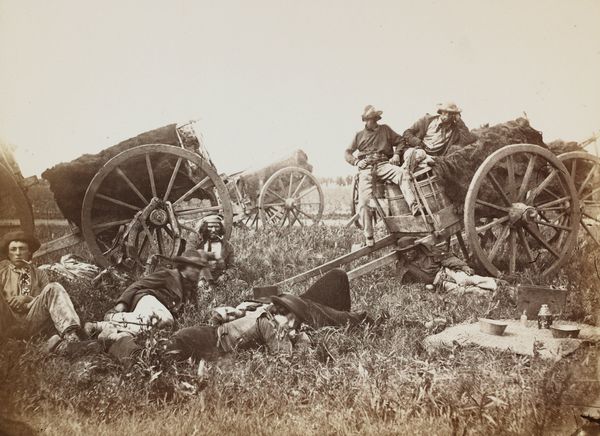
print, photography
#
print photography
#
film photography
# print
#
outdoor photo
#
archive photography
#
photography
#
realism
Dimensions: Image: 4 7/16 × 10 13/16 in. (11.3 × 27.4 cm) Mount: 12 in. × 17 1/2 in. (30.5 × 44.5 cm)
Copyright: Public Domain
Editor: I am struck by the subdued tonality. The photographic print from 1861 by Pietro Semplicini, titled *Fissore’s Plow from Tortona, Plow from Parma,* evokes a sense of rustic stillness. Curator: Indeed. The composition presents these plows almost as monumental forms, akin to classical sculptures. The interplay of lines and shapes is quite remarkable. Editor: Considering this was captured relatively early in photography's development, I’m interested in how Semplicini utilized the technology. The contrast of light and shadow articulates the object's form, revealing details about their making, labor, and design. Curator: Notice how the photographer places the plows against a simple building facade, providing a neutral background? This directs our gaze toward the tools themselves and underscores their inherent geometric qualities. Editor: I wonder about the specific workshops and laborers involved in constructing these plows. Each mark and connection has so much to communicate if we trace it back to the place and means of their creation. The dirt and the sweat! Curator: I see your point, but the print transcends the plows' utilitarian function. The formal arrangement elevates these everyday tools to objects of contemplation, prompting us to consider the aesthetic potential of ordinary forms. The repetition in the building behind underscores a subtle, yet striking geometry that reverberates. Editor: While I can appreciate your interpretation, it is challenging to overlook that these plows signify a deep material interaction with the Earth. It prompts consideration for soil health and other environmental factors central to an agricultural mode of production. Curator: Semplicini captures not just objects, but forms pregnant with a sense of underlying order, regardless of the material processes embedded in them. It is through this conscious structuring that he achieved something visually arresting. Editor: Semplicini's decision to frame work through technological eyes transforms mundane artifacts into cultural documents that allow a glimpse into the industry of labor and our agricultural past. Curator: Ultimately, Semplicini gives the eye such pleasure! The rhythmic progression and spatial arrangement offer formal rewards and a contemplative experience.
Comments
No comments
Be the first to comment and join the conversation on the ultimate creative platform.
